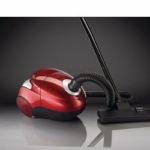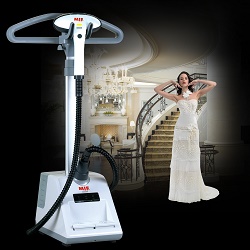How to choose a construction vacuum cleaner
If you need to buy a construction vacuum cleaner, which one to choose from the existing variety? First you need to determine the amount of work that is planned to be performed using this technique. It is important to understand how a construction vacuum cleaner differs from a household one. Then the risk of making an erroneous purchase is reduced. The key criteria for selection are product specifications.
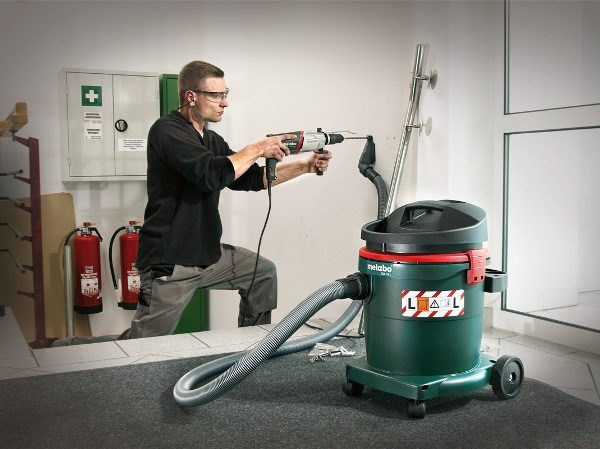
Content
The subtleties of functioning and structure
The main components of the device: electric motor, fan, filtration system, dust collector, hose and housing, start system. The device of construction and household appliances of this type has similarities: operating principle, general construction. However, there are a number of differences that do not allow industrial equipment to be placed on a par with less functional counterparts for the home.Among them: increased power; larger dimensions of the body and some units (engine, hose); enhanced filtration system. These features allow the device to function more intensively, collecting any large and small litter, without polluting the air.
The principle of operation is based on the phenomenon of rarefaction: the fan, driven by the engine, allows you to create a decrease in pressure inside the chamber of the vacuum cleaner. As a result, any items that are capable of tightening the intense flow of air get into the dust collector. Given the considerable amount of construction work, the capacity of this structural element should be significantso that in one cycle of operation the container can fit the maximum amount of garbage. This solution saves time. Additionally, you must ensure the unimpeded movement of dirt and debris through the hose. For this purpose, its diameter has been increased. All these changes, including a more powerful engine, have influenced the dimensions of the design - they have increased.
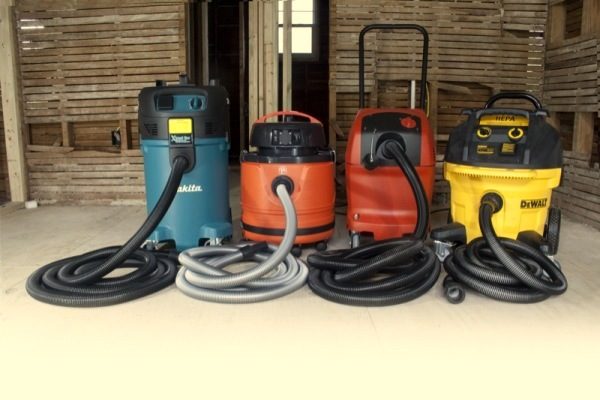
Species overview
If you need to choose a construction vacuum cleaner, then first of all you should study the features of each type.By type of container for garbage collection devices are divided into the following types:
- bag;
- bagless.
Each of the options is divided into different versions. For example, if we consider bag models, the dust collector in this case may be made of thick paper (disposable) or woven material (reusable). Bezmeshkovy include devices equipped with special containers. Vacuum cleaners of this group are divided into 2 types:
- cyclone;
- with aqua filter.
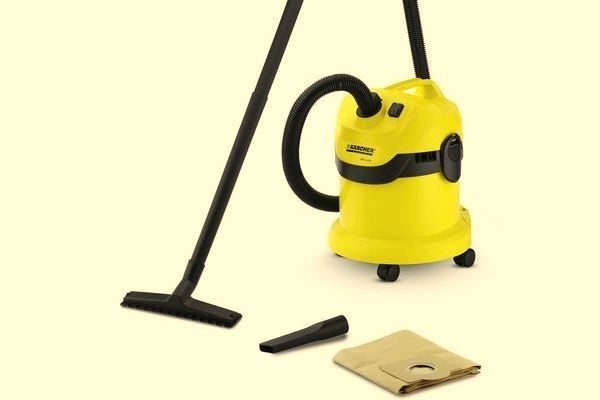
There is a division into types according to the intended purpose of the device: for dry cleaning; combined option (for dry and wet cleaning); washing; highly specialized for cleaning explosive, fire hazardous waste and heat resistant. The choice of building a powerful vacuum cleaner should be made on the basis of the comparative characteristics of different types: their positive and negative qualities, parameters and capabilities.
Bag performances
The main advantage of models with disposable dust collectors is a comfortable operation, as it does not have to shake out the dust and breathe it. In addition, paper bags are much better at catching the smallest particles of dirt than their cloth equivalent.However, there are also disadvantages to such vacuum cleaners, for example, additional expenses. If the device is operated for a long time, during this period the amount spent on consumables (disposable bags) can reach the cost of the equipment itself.
The disadvantages of paper dust collectors include the need to find the right type. For different models of vacuum cleaners bags of a certain configuration are intended. This allows you to attach them to the device.
There are universal dust collectors, but sometimes you have to go around several shops to find a suitable model.
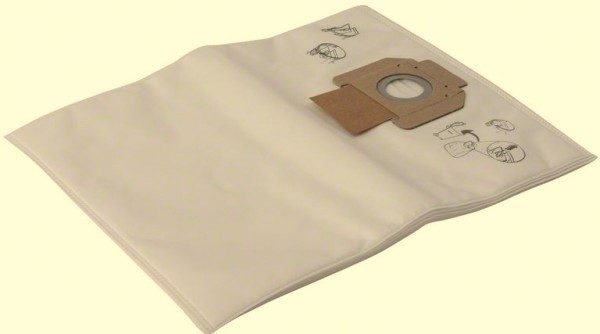
A vacuum cleaner equipped with a reusable bag is an economical option because you do not have to regularly purchase a new dust bag. Reusable bag shake out as soon as it is full. The main disadvantage of such models is the low efficiency of the collection of pollution. The woven material will pass fine construction dust, which will increase the cleaning time, which means that the power consumption will be higher.
Bagless Vacuum Cleaners
If we consider cyclone versions equipped with containers, their main disadvantages are the following: increased noise level,due to the contact of particles of dirt with the walls of the dust collector during operation; the need to shake out the garbage, and therefore have to breathe dust. Another disadvantage is that the container version of vacuum cleaners are not designed to collect the smallest particles of pollution. The main advantage of such models - economy, because you do not need to regularly purchase a set of bags.
Vacuum cleaners with aqua filter are the most advanced technique in its category. They are able to trap coarse debris and construction dust, which is provided by a multi-level filtration system. However, on the site where construction is underway, there is not always access to clean water in large volumes, and the container with liquid will have to be cleaned quite often. In addition, the price of models with an aqua filter is higher in comparison with analogues.

Versions that are different in purpose.
Solving the problem of how to choose a construction vacuum cleaner, you need to take into account the possibilities of such equipment. For example, a model for dry cleaning is able to cope only with dry mixtures: gypsum, plaster, lime, cement, etc. This is the simplest version of a vacuum cleaner.The combined version is more functional, as it is designed for dry and wet cleaning. Such a vacuum cleaner can easily remove spilled liquids from the surface.
If you need a safe construction vacuum cleaner, which one should you choose to work with explosive and flammable substances?
First of all, it is necessary to pay attention to the design: the engine should not contain graphite brushes.
These elements contribute to the formation of a spark when starting the technology. Heat-resistant vacuum cleaners are designed for cleaning heated litter (hot metal chips, etc.).
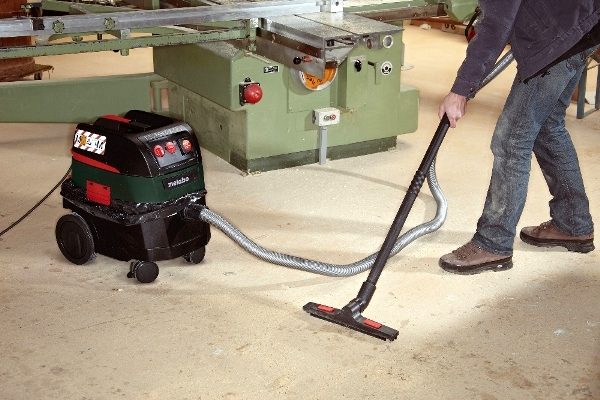
Criterias of choice
The main task of the user is to determine the operating conditions of the equipment and correlate with them the parameters of the selected model. Consideration should be given to particle size, structure, and composition. Then we select the model that fits this criterion. Pay attention to a number of product characteristics:
- Power. Typically, the value of this parameter lies in the range of 1.0-1.4 kW. The higher suction powerthe more intensively the device functions, and it also draws air more strongly. For example, for the specified range of values characteristic performance up to 50 l / sec.If we consider professional equipment, its power will be several times larger - up to 7 kW. At the same time, the air flow rate also increases: from 60 to 100 l / s.
- The capacity of the dust collector - the value of this parameter is in the range from 20 to 50 liters. If a choice is made for a construction vacuum cleaner, it is recommended to first determine the approximate amount of contamination on the site. Compliance with these data will not only save time when disposing of garbage, but also to get a more convenient to use model of the vacuum cleaner, since the capacity of the dust collector affects the dimensions of the instrument case.
- The degree of vacuum in the chamber during fan operation. Usually this parameter has a value in the range from 17 to 250 mbar. Based on this characteristic, you can determine the strength of the suction device.
- Body material. Construction vacuum cleaners are shock resistant. This means that aluminum, brass or steel is used in the manufacture of the case.
Thus, when choosing a powerful vacuum cleaner for cleaning a facility under construction or a highly specialized equipment, you must first take into account the operating conditions.Secondarily, the device parameters are taken into account. In addition to the above-mentioned characteristics, additional functions of the vacuum cleaner are taken into account: indication, overload protection, suction force regulator and the possibility of spontaneous cleaning of the filtration system. The more functional and powerful the device, the higher its price.

/rating_off.png)






